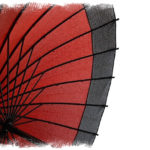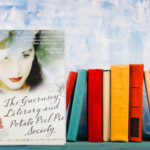Transcending Boundaries, Diversity and Inclusion in Australian Fiction Book Publishing.
Diversity and inclusion in Australian publishing continue to be under scrutiny. The Australian Publishing Industry Workforce Survey on Diversity and Inclusion, released on 31 August 2022, referred to all sections of the book publishing industry. The survey report stated that: ‘The industry is largely white, including a high percentage who identify as British; less than ten percent identify with an Asian culture, and 10.5% with a European (non-British) heritage’.
In my area of research, the field of literary and genre narrative fiction, South Asian Australians are increasingly taking on roles of editor and senior editor, whether in-house or freelance, which is a recent and positive development in the book publishing industry here in Australia.
What is needed now then is diversity and inclusion in the many roles that are seen as gatekeepers. Marketing departments, for example, have considerable influence on what is published. It is critical to employ staff who understand the market and readership of narratives from South Asian migrants and the diaspora in Australia when making decisions about accepting submissions. Manuscripts may be overlooked if the manuscript assessor does not relate sufficiently to the narrative. It should be acknowledged here that workers in the book publishing industry work longer and harder than ever and are under pressure to select books that will earn a good return. Nonetheless they may be passing over books which have the potential to reach a wide readership.
As the publishing Workforce Survey joint principal researcher Susannah Bowen noted: ‘In the publishing industry, workers are also gatekeepers and tastemakers. A diverse workforce supports cultural representation and enables inclusive publishing in literature, education and information.’
It is for this reason that the announcement by the Australia Publishing Association for a Diversity and Inclusion Plan for Australian Publishing 2024-25 is to be applauded. This plan to collect much-needed data is so important. As Susannah Brown and Beth Driscoll discuss in ‘Measuring Diversity in Australian Publishing’, there is a strong connection between staff in the publishing industry who ‘commission and finance books and the diversity of writers and voices that are eventually published’. Until now, there has been no data collection for diversity and inclusion in the book publishing industry.
In Transcending Boundaries, published by the University of Technology Sydney, Australia (2017), I investigated the experiences of Australian authors who had migrated from or had cultural links to South Asia who were publishing works of fiction in Australia. My results showed that more novels by South Asian Australian authors were being published in 2014 than when my research statistics began in 2004 which was encouraging, but the number of such books published barely registered on the chart compared to the total number of novels published in Australia.
Some authors might resist being tagged with what they perceive as a simplistic label, what Sunil Badami has referred to as the ‘Professional Indian’ tag, nonetheless, highlighting identity as a point of difference as well as promoting the ‘topical and familiar issues’ in the narratives that appeal to and engage readers, as Simone Lazaroo suggests, is a persuasive combination and an asset to authors in a highly competitive industry.
Authors spoke to me about misunderstandings which arose during the process of publishing their books where authors felt they and their books were culturally misrepresented, stereotyped and/or marketed as exotic. These were manifested in decisions about book covers, marketing, and promotion of the books and authors.
They may seem minor quibbles to some Australian publishers and readers, but they are significant to the author whose culture and heritage ought to be respected. Such misrepresentations and misunderstandings are the cause of common complaints about a lack of cultural awareness in the book publishing industry rather than the odd aberration. After all, it doesn’t seem too much to ask for Australian publishers to do their homework and get it right.
South Asian Australian authors can be disappointed when reviewers reveal unconscious bias, prejudice and lack of awareness when their books are reviewed. Some authors have pointed out that even reviews published in respected literary journals can seem oblivious to the intention of the author, and aspects of racism that are revealed through the narratives.
James Kellow, President of the Australian Publishers Association (APA) said that ‘our workforce doesn’t always represent the breadth of our culture. This plays into what and how we publish and the extent to which we reach, or don’t reach, all potential readers.’ I am heartened by the knowledge that the lack of diversity and inclusion in book publishing is now acknowledged and that submissions of works of fiction by South Asian Australian authors may receive a more favourable reception. Nevertheless their submissions may still be influenced by unconscious bias and prejudice on the part of manuscript assessors. Queries about whether such books will sell in sufficient numbers to justify the risk and expense of publishing, for example, which to some extent can be addressed by marketing and promotion.
It should be noted here that the Australian Government Home Affairs website states that: ‘At the end of June 2021, 710,380 Indian-born people were living in Australia, more than twice the number (337,120) recorded on 30 June 2011. After the United Kingdom, the Indian-born population is the second largest migrant community in Australia, equivalent to 9.5 per cent of Australia’s overseas-born population and 2.8 per cent of Australia’s total population. This means that Australian publishers may well be missing an untapped market. The Australian Bureau of Statics adds that: ‘The Indian-born group recorded the largest increase since 2012’.
It is promising that South Asian Australian authors of fiction are winning major literary awards and prizes in recognition of the standard of their work. Shankari Chandra won the 2023 Miles Franklin Award, Australia’s foremost literary fiction award, for her novel Chai Time in Cinnamon Gardens; and Michelle de Kretser has won the prestigious Miles Franklin Award twice, in 2013 and in 2018, as well as other major Australian and international literary awards, including the Prime Minister’s Literary Awards (2013), the NSW Premier’s Literary Awards Christina Stead Prize for fiction (2008, 2014, 2019,), WA Premier’s Literary Awards Fiction Prize (2013) and Book of the Year. The Bonesetter’s Fee & Other Stories by Rashida Murphy was shortlisted in the 2023 NSW Premier’s Book Awards. Sulari Gentill won the Ned Kelly Award 2018: Best Crime Novel for Crossing the Lines, which was also shortlisted for the Davitt Award that year. The novels The Seduction of Silence and There, Where the Pepper Grows by Bem Le Hunte became number one bestsellers and were published internationally to critical acclaim. Roanna Gonsalves won the NSW Premier’s Literary Award Multicultural Prize 2018 for her book The Permanent Resident, her book was also long listed for the Dobbie Literary Award 2018. Literary awards and prizes play an important part in recognising outstanding books and focussing media attention on them. This, in turn, increases book sales.
So what might the future of Australian book publishing look like? Respondents to the Workforce Survey suggested ‘diverse recruitment’, such as a wider range of advertising for jobs, awareness of structural racism when recruiting workers, and positive action such as quotas. This is perhaps the salient point to make.
The APA has committed to ‘continue the work of its Diversity and Inclusion Working Group and its wider reference group; to collect, assess and share industry data; to provide educational resources about diversity and inclusion to members and regular updates on best practice initiatives from member organisations; and to develop initiatives to support change in the industry’.
The APA has on its website recommended practical ways for publishers to ensure diversity and inclusion takes place in their workforce, for example, ‘Endorse a publicly available Diversity and Inclusion Policy stating the organisation’s commitments; Participate in the APA’s collection of data; Create opportunities to hire from underrepresented groups; Provide appropriate support for career progression and retention’, among other recommendations.
As I said at the beginning, acknowledging the problem is a good start but there is still a long way to go before we see true diversity and inclusion in Australian book publishing. The APA recommendations for diversity and inclusion are a positive step towards this goal.
Acknowledgement: An earlier version of this article was first published in Confluence South Asian Perspectives, this updated version is reproduced in FemAsia with the kind permission of the Editor Vijay Anand.
References:
https://publishers.asn.au/Web/Web/Member-Resources/ResearchReports/Workforce_Survey_2022.aspx
https://publishers.asn.au/Web/Our-Work/Projects-Campaigns/DAI/Diversity-Inclusion-Plan.aspx
https://www.homeaffairs.gov.au/research-and-statistics/statistics/country-profiles/profiles/india
Brown Susannah and Driscoll Beth, ‘Measuring Diversity in Australian Publishing’, The Power to Persuade https://www.powertopersuade.org/blog/measuring-diversity-in-australian-publishing/22/11/2021
Transcending Boundaries by Sharon Rundle: https://opus.lib.uts.edu.au/handle/10453/116590
BIONOTE:
Dr Sharon Rundle is a University of Technology Sydney Friend of Distinction, who encourages international people-to-people links. She has edited fiction and nonfiction books, literary magazines, journals, and websites. She co-edited five Indo-Australian anthologies of short fiction, with Forewords by HE, the Australian High Commissioner to India, the Hon. Mr Barry O’Farrell AO, and Mr Amit Dasgupta AO. She is co-creator and co-editor of the Agathokakological Aussie Summer Mosaic of Stories with Foreword by the AHC and Introduction by Consul-General of India to Sydney Mr Manish Gupta. Her stories, essays and articles appear in books, anthologies, journals, magazines, and have been broadcast on BBC radio. She has taught at universities and presented conference papers in Australia, the UK and India. She has served on the Board of Directors and Management Committee of the NSW Writers’ Centre. Sharon was awarded the UTS Faculty of Education SMSA Medal for Superior Academic Achievement; and University of Technology, Sydney, Alumni Award for Excellence 2010; and the Australia India Business and Community Awards finalist 2022. Sharon acknowledges the support of the Australian High Commission to India; Australia-India Council (DFAT); UTS; Copyright Agency CAL Cultural Fund; and the Australian Commonwealth Government Research Program Postgraduate Award. https://sharonrundle.com.au



